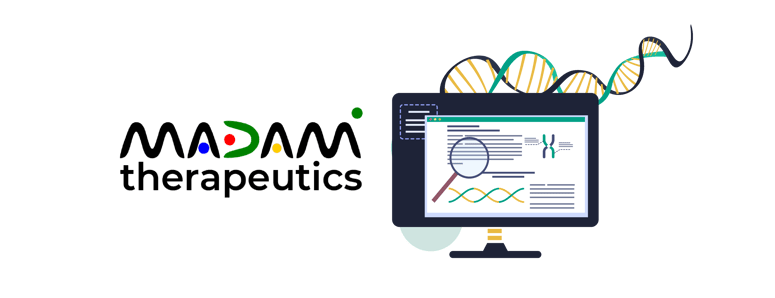Using bioinformatics and machine learning to find new anti-microbial therapeutics
 Antimicrobial resistance is on the rise, but the amount of new antibiotics released to the market each year is notoriously low. But there’s good news, too: harnessing the power of bioinformatics to find new and promising potential treatments for bacterial infections can dramatically speed up product development pipelines, to bring new potential treatments to market more quickly. Today, let’s dive into a client case that demonstrates exactly how that can be done.
Antimicrobial resistance is on the rise, but the amount of new antibiotics released to the market each year is notoriously low. But there’s good news, too: harnessing the power of bioinformatics to find new and promising potential treatments for bacterial infections can dramatically speed up product development pipelines, to bring new potential treatments to market more quickly. Today, let’s dive into a client case that demonstrates exactly how that can be done.
BioLizard first joined forces with Madam Therapeutics to develop machine learning models to predict potential efficacy and toxicity of so-called Synthetic Anti-Microbial and Anti-Biofilm Peptides (SAAPs). Alongside building these predictive models, BioLizard’s teams also created a database of toxicity and activity of antimicrobial peptides (AMPs) using publicly available data and information extracted from scientific literature. They did this using a variety of different natural language processing techniques – the same family of computational techniques used in by a popular chatbot that you might have heard of: ChatGTP. In the case of this database created by BioLizard’s teams, the data contained within it could then be used for the training and testing of the sequence-based prediction models.

From there, Madam Therapeutics was able to select a set of promising potential AMPs for experimental validation. After these experiments were performed, it was time for BioLizard to provide follow-up bioinformatics support. The new aim? To use the new experimental results generated by Madam Therapeutics to further optimise the machine learning prediction models for AMP toxicity and antimicrobial activity, and also to create separate predictive models for specific bacterial species and genera.
 BioLizard was able to successfully integrate the new experimental activity and toxicity data with the data from the existing database, and trained new species- and genera-specific predictive models that had improved performance! In addition, in an interactive approach, the Bioinformatics team also created brand-new synthetic sequence libraries, based on a set of rules defined by Madam Therapeutics, and ran the predictive models on all the sequences in these libraries in order to find more new and promising AMPs.
BioLizard was able to successfully integrate the new experimental activity and toxicity data with the data from the existing database, and trained new species- and genera-specific predictive models that had improved performance! In addition, in an interactive approach, the Bioinformatics team also created brand-new synthetic sequence libraries, based on a set of rules defined by Madam Therapeutics, and ran the predictive models on all the sequences in these libraries in order to find more new and promising AMPs.
In the end, the algorithms created by BioLizard’s Bioinformatics team generated almost 100 million novel AMP sequences. Using our improved and more specific machine learning models, we were able to predict the toxicity and anti-microbial activity of every single one of these sequences. This provided a rich set of promising potential new AMPs for Madam Therapeutics to select and further test.
This collaboration between BioLizard’s Bioinformatics team and Madam Therapeutics is a great example of how bioinformatics and machine learning approaches can be used to fine-tune challenging drug development pipelines, and how computational tools can be used iteratively in combination with experimental data.
Are you looking for bioinformatics support?
Click here to read more about how our bioinformatics team works...
Or reach out to us today!



